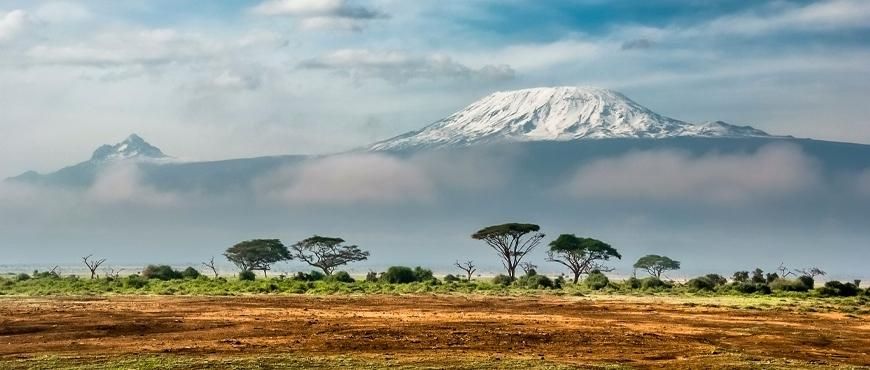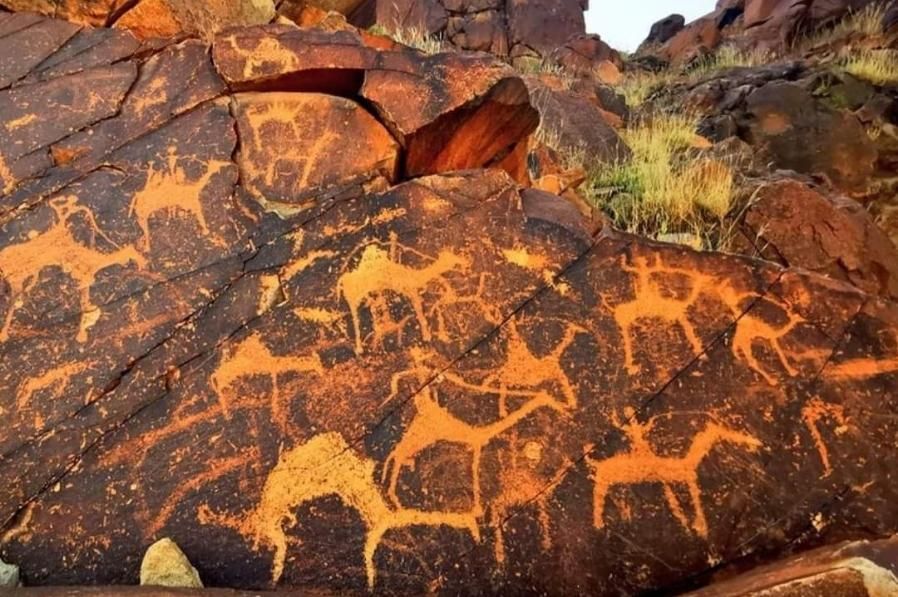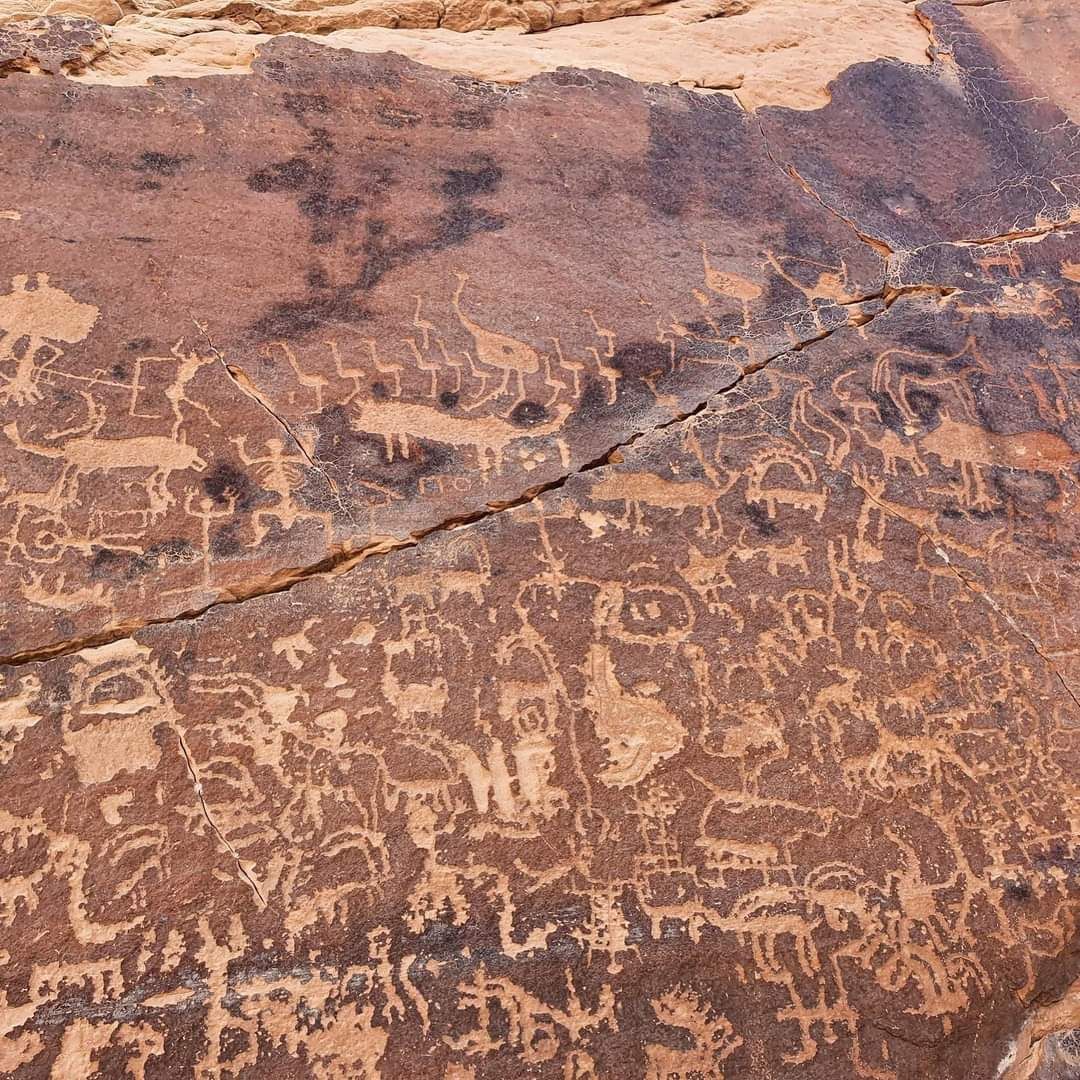Future Docufictions

Kiribati

This small country of Micronesian people, which consists of 32 atolls and a corral island, has a fascinating cultural heritage. The country does not have written language, so traditions are preserved by dance and music. In addition to artistic story line, the docufiction will emphasize the struggle of the islands and their people to confront the challenges of climate change and use art and culture to support efforts to promote sustainable environment. It is expected that the filming will start in July 2023, following receipt of the letter of Intent from relevant parties in Kiribati.
This video one such story taken from heritage archive made up of three dances, welcoming the viewers into a portrayal of the typical life of the community.
The first dance, performed by women, is the process of garlanding. This is how guests are officially welcomed and accepted by an island. During garlanding, women would meet official guests as they arrived on the beach.
The men then prepare their lures for fishing and explain to the viewer the cycle of fishing as it is dictated by lunar phases.
Lasty, the community comes together in happiness, their typical day in which they enjoy the company of their guests and the bounty of fish supplied by the sea.
Docuseries: Kiribati
Title: TBD
Project Manager: Robert Karoro
Partners: EMRU, KEMRU, and Maraki Kokoria
Filming date: July 2023
Filming locations: South/North Tarawa and Banaba
The documentary will showcase the interaction between Banabans, our ancestors & nature through the story of how water was discovered on Banaba. The story is based on oral history that then follows how colonialism and increased droughts in the era of climate change dramatically impacted the lives of Banabans.
Synopsis
Banaba, otherwise known as Ocean Island, is a raised limestone island in the central Pacific that is part of the Republic of Kiribati. During the times of our ancestors, it was widely known that water on Banaba was scarce. Banabans stored water during wet seasons to be consumed during the dry season. However, during periods of droughts, Banabans were often left unprepared. In the most perilous of droughts, Banabans could only drink water from the eyes of the minuscule flying fish, but this all changed when the young man, Naikara, found water.
During a particularly rough drought, Naikara set out to look for water in the forest around Buakonikai (village interior of Banaba). He thought of his young family, a 10-year-old daughter, a 4-year-old son and his wife, who had not had a single drop of water for two days. In desperation, he cried out to his ancestors to help him bring life to his family.
While resting from the scorching heat of the sun, he noticed a crab staring up at him. At first, he didn't acknowledge the crab but soon realised the crab’s eyes remained fixed on him. As his attention moved to the crab, he noticed the exoskeleton was wet. He quickly jumped to his feet and started following the crab, leading to the entrance of a cave. The cave was dark, and he couldn't see anything, but he continued following the crab into the cave, feeling his way around. Not too far from the entrance, he reached down and felt water. Amazed by what he felt, tears came running down his face and in that instance, the crab morphed into a woman that lit up the cave.
Naikara fell to his knees, for he knew he was in the presence of the deity, Tutuabine. The woman told him, ‘I heard you cry, and I, therefore, came to help you. Go back to your family in the village and tell everyone that there is water on the island. But before you go, I will give you the instructions on how to fetch water from the cave, and you will have to tell everyone in the village’.
Tutuabine instructed Naikara that only young women could fetch water from the cave. Men were forbidden from entering. To enter, the young women must be dressed, oiled up with coconut oil, and with fresh garland before entering. While this brought water security to Banabans for many generations, the entire balance between Banabans and the island’s delicate environment would be shattered by European conquest.
When the Europeans reached Banaba, the island gained new importance in the colonies due to an abnormally large concentration of Phosphate that, along with neighbouring Nauru, would go on to supply much of the fertilizer that led Australia and New Zealand to provide food security to their dependents. In the next scene of the docufiction, the drama surrounding how the Banabans were tricked out of their island, mined to resemble a barren lunar landscape, will be set to song, chronicling their eventual exodus and relocation to distant Rabi Island in Fiji.[1]
While mining forced the out-migration of much of the island’s native custodians, a few Banaban families remained on their home island, and the story, in recent years, has begun to loop. Water is once again scarce, but with the land decimated by colonial overlords having strip-mined Banaba, Tutuabine’s proverbial cave ceases to exist. The remaining Banabans have been abandoned and their plight has turned to desperation as there is no longer harmony between the Banabans and nature.
In the final scene, a young man on Banaba is searching for water in this modern time during the drought. The young man knows the story of Tutuabine and the assistance previously offered from his ancestors. He tries to call out to them jokingly, but little does he realise that a crab is staring up at him. This time, however, the exoskeleton is dry from the drought, and fear fills its eyes.
The concluding song will be arranged with Banabans from Rabi (Fiji), Australia, and Kiribati, to sing together and give a glimpse of hope for the Banabans.
The End
[1] This part of the movie will show historical information that are available in videos and archives on environmental damage done on Banaba and how it has destroyed environment (documentary e.g Go tell it to the judge). https://www.youtube.com/watch?v=VS99b9qMTvI
Uzbekistan

Philippines

This archipelagic country of more than 7640 islands is the only country with Hispanic roots in Asia and has a tremendously rich theatrical and musical tradition, supplying performers to most countries in the Middle East. It has also had a turbulent history of military dictatorship and is now entering in new uncertain phase following May 2022 elections. We are currently in discussions with the Film Development Council of the Philippines and ITI Philippines on the topics for an exciting docufiction.
In her address to UNESCO’ screening of Ulysses from Ghana, Mrs. Cecile Alvarez, UNESCO Artist for Peace, announced that preparations are being made for making a docufiction in the Philippines on an indigenous topic.
SCENARIO FOR PHILIPPINE PROPOSED FILM: INDIGENOUS LIVES MATTER
Background: The Afro Asian connectivity was initiated through screening in Manila on April 3 2022 of the Ghanian film Ulysses from Ghana on old and contemporary vestiges of slavery and discrimination. It had for its purpose to link black lives matter with indigenous lives matter.
Accordingly, it is proposed to present the story in the Philippine were the incursion of both Spanish and American and other colonial powers were stopped if not mitigated by muslim resistence and traditional commitment to the importance of protection of ancestral land.
The center piece of this scenario would be the heroic story of Sultan Kudarat which occurred centuries before Patrick Henry’s celebrated quote “give me liberty or give me death”. Sultan Kudarat ruled Mindanao (then Maguindanao) for fifty years, from 1619 to 1671. He gathered leaders or the different tribes of Muslims in Mindanao; during his long reign he ensured that Spain never completely controlled Mindanao until the beginning of Spanish American war. In their battles against Kudarat, Spanish soldiers developed a plan to keep Kudarat’s wife a hostage and thus block his military victories.
The true heroine of the movie would be Kudarat’s wife, one of the daughters of Sultan Mawallil Wasit of Sulu archipelago in the early part of 17th century. Pursued by the , during one of the bloodiest battles in 1637 when Kudarat was wounded, she jumped from the clift with her baby rather than be kept hostage by the invaders.
This story provides artistic core involving a more contemporary story created by well known Philippine playwright Marilou Jacob on the Muslim situation or rebellion. The angst of the muslim community in terms of their sense of lack of opportunity or the of child warriors that get involved in this warfare which was presented in Malou Jacob’s BATANG MUJAHIDEEN play. This socio political reality is depicted in the inequity and deprivation arroused and motivated rebellion in Mindanao. Coupled with the Christian /Muslim Conflict of 20th and 21st century that mirror the violence and the plight the plays which were performed on stage and broadcast on Radio Balintataw and which have won awards as best drama and best educational program.
The peace initiative in the contemporary Philippines through different administrations embarked on a sustained dialogue process until finally the Organic Law for the Bangsamoro Autonomous Region in Muslim Mindanao was ratified by the Congress in 2018, giving a hope for a lasting peace following one of the longest civil conflicts in the world.
The film would be a collage of legend, Malou Jacob’s play and commentaries on both past and present plight of Muslims in Mindanao proving the value of Road to Peace and Cultural Diversity, the two pillars of UNESCO programmes.
Venue: in coordination with the SDGS Resiliart Secretariat , the film will be made on locations in Mindanao selected in cooperation with The Film Development Council of the Philippines (FDCP). The National Commission on Muslim Filipinos and the cinema and dramatic arts committees of National Commission on Culture and Arts (NCCA) of the Philippines. .It will also emphasize the value or integrating cultural traditions inclusive of the wedding or the lamentation and prayers in chants, traditional music and dance . These are component parts of any celebration and the rituals of triumph over death which would be both highly dramatic and audio-visually highly effective.
This concept is Presented by the Earthsavers Dreams Ensemble UNESCO Artist for Peace in the coordination with the International Theatre Institute ( ITI) Social Change Network and The Philippine ITI Center together with the South-South Cooperation Council.
Pakistan

The storyline will center on the ancient city of Lahore in Punjab, both on rich architectural traditions and elaborate music and dances performed in front of heritage sites. As it happened, many of the religious sites of different faiths are found in Punjab, and the Government is keen to promote religious tourism, which would also strengthen the much needed religious tolerance in this volatile part of the world. The artistic team wishes to express its gratitude to the provincial Government of Punjab for its support. Following the letter of intent, it is anticipated that filming will take place between October and December 2023.
The following is the video message of Ms. Saman Rai, Director General for Population Welfare of the Government of Punjab, which was shown at the UNESCO screening of Ulysses from Ghana on 19th September 2021.
Ecuador

Kenya

Zimbabwe

Saudi Arabia

Futures Docufictions
Menu
Latest Gallery
Webmaster Nelson Zamora
Copyright © 2022 Ulysses from Ghana












